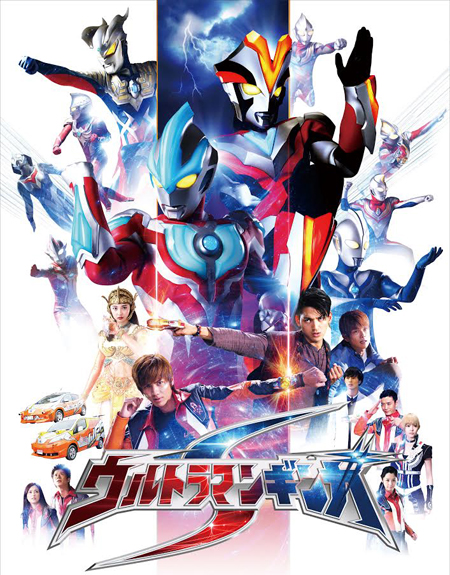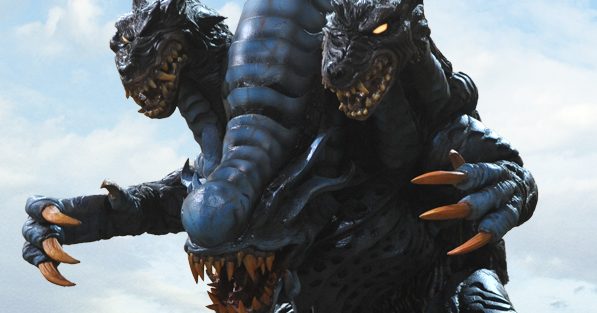Download Vidio Ultraman Gingga
Download ultraman ginga vs ultraman dark & ultraseven dark by N. Release Date: 25 Des 2015. Aug 30, 2016 - The SM Family Movie Day, a monthly exclusive offer for the mall's patrons which encourages families to continue to be a tightly-knit unit.
Show Type: Tokusatsu Science Fiction/Fantasy Produced by Tokyo Broadcasting System (TBS) and Tsuburaya Productions First Telecast: July 10, 1966 Last Telecast: April 9, 1967 Color, 16mm 39 Episodes + 1 Pre-Premiere Special 40 TOTAL Basic Plot: In the near future, sinister aliens and giant prehistoric monsters threaten civilization! The only one equipped to handle these disasters is the Science Patrol, a special police force with high-tech weapons and vehicles at their disposal. Led by Captain 'Cap' Muramatsu, the Science Patrol is ready to protect the Earth from the ravaging monsters. But when the situation becomes desperate, Hayata, one of the Patrol's members holds the key to our salvation.
Fate has given Hayata the ability to secretly transform into an amazing, superpowered giant from space. A being known as Ultraman!


Series Background Since its premiere on July 10, 1966, on the Tokyo Broadcasting System (TBS), Ultraman (or Urutoraman in Japan) has, to this day, become a pop culture icon beloved by children and fans in Japan and the world over. Created by Japan's late special effects wizard Eiji Tsuburaya, the show was a follow-up to his B&W TV hit, Ultra Q (a show about a group of people who solve supernatural mysteries, involving ghosts, aliens and giant monsters; Comparable to The Outer Limits (1963) and The X-Files), which premiered at the start of the same year, but was being produced as far back as 1964. Pyar hamara amar rahega jhankar mp3. Ultraman has far eclipsed its predecessor, and has become the model Japanese superhero to this day, inspiring many sequel shows and imitations, few of which could surpass this show (even Ultraman's most popular rival, Kamen (Masked) Rider, which also became immensely influential to this day since its premiere on Japanese TV in 1971)!
Iomega iconnect wireless data station drivers. Iomega Corporation, a wholly owned subsidiary of EMC Corporation headquartered in San Diego, is a worldwide leader in innovative storage and network security solutions for small businesses, home offices, consumers and others. The Company has sold more than 410 million digital storage drives and disks since its inception in 1980. About EMC EMC Corporation (NYSE: EMC) is the world's leading developer and provider of information infrastructure technology and solutions that enable organizations of all sizes to transform the way they compete and create value from their information. Information about EMC's products and services can be found at.
This show's qualities would become traditions in the many 'Ultra Series' that followed. Aside from the titular hero, they include: - The 'Science Patrol' (or 'Kagaku Tokusou Tai'/'Scientific Special Search Party' in Japan), the high-tech police force equipped with fancy uniforms, high-tech weaponry and vehicles, the latter clearly inspired by the many revolutionary vehicles from Gerry Anderson 's 'Supermarionation' TV puppet shows, particularly Thunderbirds! The 'Science Patrols' in all subsequent Ultra Series would be more military-like (like the Ultra Garrison in Ultra 7).
Nonetheless, the Science Patrol and its ilk were also no doubt inspired by the futuristic pulp heroes created by SF authors Edward E. 'Doc' Smith (the creator of the Lensman books) and Edmond Hamilton (creator of Captain Future and Starwolf, the former became an anime series, and the latter became a loosely-adapted TV series produced by Tsuburaya, both in 1978), whose works also inspired the original Star Trek. - The show's many famous monsters, including creepy aliens like the multiplying insect-like Baltan Aliens (the most popular among fans), the Zarab Alien (who provided the obligatory Ultraman impersonator) and the surreal Dada Aliens. And, of course, there are many Godzilla-style monsters, among the most memorable were the ferocious, gold-colored Red King, the massive horned Gomora, the spiky Bemular (Ultraman's first enemy), Jirass (which was a disguised Godzilla costume), and many others. The monsters in many of the later Ultra-Series would look even more outlandish (whereas the shows since 1990's Australian-produced Ultraman: Towards the Future took a more straightforward and realistic approach)!